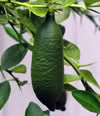I wanted to bring up the Satsuma that I found growing in Wilmington, NC last year.
First, I know that it has been growing for at least 8 years without total die back. Some winter die off, yes. But, just some of the outer branches as you would expect.
Second, the Satsuma part of the tree is about 6 to 7 feet tall and 3 or 4 inches in diameter at the base.
Third, the trifoliate rootstock had grown to about twenty feet tall.
Forth, This Satsuma is from nursery stock.
In this area Satsuma trees have been killed to the ground or the rootstock at least twice in the last 8 years. The last time about 2 winters ago, it killed several other plants that had been living about 10 or more years. One was a Bay leaf tree that Id had for at least 12 years.
But the Wilmington Satsuma didnt die.
It could be a colder than normal very hardy Satsuma? If it were from a seed Id think that possible. But, it was from grafting. This would give rise to the thought that theres something about the grafting that makes it a very cold hardy Satsuma trees.
Now Ive seen the results of high grafting on trifoliate rootstock. From my observation in Virginia Beach it makes the grafted wood more cold hardy than low to the ground grafting.
So my hypothesis is that the Wilmington Satsuma survived because the over grown trifoliate rootstock is pumping 3 or 4 times as much cold hardy sap as the Satsuma. This protected the Satsuma when others in the area died to the ground or the rootstock.
To test this theory Im going to grow a few variations. I will use grafted Wilmington Satsuma bud wood.
One will be a control. A traditional low graft. Any emerging trifoliate buds will be removed.
2nd will be a low graft with a Nurse Branch of trifoliate rootstock. The Nurse Branch will be kept about the same size as the Satsuma.
3rd will be a low graft with a Nurse Branch of trifoliate rootstock. The Nurse Branch will be able to grow as big as it wants. This will simulate the original tree that I found.
4th will be a high graft. About 4 or 5 ft. above the ground. Any emerging trifoliate buds will be removed.
5th will be the original Wilmington Satsuma. After coming to this realization I drove over to see the Tree again. The owner had the Nurse Branch of trifoliate rootstock cut to 6 ft tall. Time will tell if this changes its cold hardiness.
Im open to suggestions for #6 or more.
Ill protect them the first year to give them a good start. Then Ill monitor them each year.
In the close up pic the trifoliate is marked with a T. The Satsuma is marked with an S.
Terry














